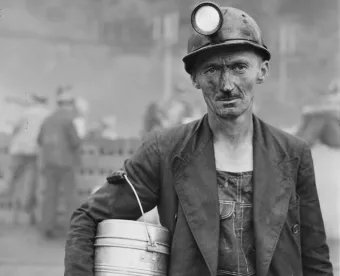After 41 years in the mining industry and three months as the Assistant Secretary of Labor for Mine Safety and Health, David Zatezalo, has begun to publicly outline his vision for the Mine Safety and Health Administration (MSHA).
At a recent industry event, which he attended as part of his whistle-stop tour of MSHA offices and industry group meetings, Zatezalo presented a review of the agency’s last year and, perhaps most interesting, a look ahead.
After reviewing enforcement statistics compiled by the agency in the last year, Zatezalo expressed gratitude for the “slight uptick” in the budget allocated to MSHA, acknowledging that any increase was significant, especially when compared to the budget cuts faced by other federal agencies.
Zatezalo discussed how, under his leadership, MSHA will spend these allocated funds. MSHA will focus, he said, on what he referred to as the “3Es”—consistent enforcement, education and training, and compliance and technical assistance in engineering. He stressed that the agency’s focus on the 3Es would continue unchanged. But what changes can the industry expect to see under MSHA’s new leadership?
Zatezalo urged mine operators to focus on improvement in powered haulage safety, pointing to the number of fatalities in recent years related to the operation of heavy mobile equipment and seat belt use. Zatezalo stressed that technology already exists that would reduce these types of injuries and fatalities and that these technological improvements would not carry a heavy administrative burden for mine operators. In particular, he stated that operators at surface mines should make use of proximity detection technologies, currently used on continuous miner machines in underground coal mines, and seat belt interlock devices. Zatezalo also stated that MSHA would consider rulemaking to mandate use of such technologies.
After discussing his concerns about powered haulage and seat belt use, Zatezalo gave an important rulemaking update. He stated decisively that the new workplace examination rule, applicable to metal and nonmetal mines, was in the final stages of approval. He did not discuss the details of the rule’s provisions, but stated that he did not view the rule as burdensome on operators. MSHA will provide training and assistance regarding the requirements of the new workplace examination rule to operators, he said.
Next, Zatezalo discussed the recent rulemaking on silica by the Occupational Safety and Health Administration (OSHA). Zatezalo commented that he believes MSHA and OSHA should not have widely differing silica rules and indicated that MSHA intends to advance a potentially analogous MSHA rule on silica.
Zatezalo then turned to discussing the historical division of MSHA into coal and metal/nonmetal program areas. He commented that, for the sake of efficiency, it does not make sense to have inspectors dedicated to one or the other industry. Whatever field office is closest to the mine should be the one to inspect that mine. He also implied that he does not see a reason for dividing the district offices into just coal or just metal/nonmetal.
Zatezalo made a few remarks stating his support for MSHA’s education, training and compliance assistance activities. He said that there will be changes announced in the near future directed toward improving compliance assistance to mine operators, but he did not give any specifics on what those may be.
Zatezalo closed his presentation by signaling his intention to use a “more aggressive posture” on unpaid civil penalty fines. He reminded operators that it is a violation of the Mine Act to fail to pay fines and that delinquent payments could lead to the issuance of additional citations and 104(b) failure to abate orders. He recommended, in the case of mine operators experiencing cash flow concerns, communication with the agency on the use of payment plans.




 />i
/>i

